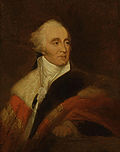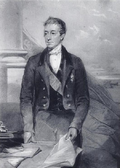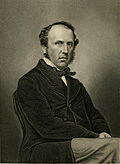Modern India, with its rich tapestry of cultural, social, and political developments, has undergone a remarkable transformation over the centuries. For UPSC aspirants seeking to grasp the complexities of the nation’s history, a comprehensive understanding of Modern India is imperative. Here we provides a condensed overview of the key events that have shaped Modern India, from the decline of the Mughal Empire to the Independence Day .
History of Modern India
Chapter 1. The advent of Europeans and conquest by the British
A. The advent of Europeans
2. The Dutch
3. The English
4. The Danes
5. The French
1. First Carnatic war
2. Second Carnatic war
3. Third Carnatic war
C. Prominent Regional States and conquest by the British
D. Governor-Generals (1773-1857)
| Governors-General of the Presidency of Fort William (Bengal), 1773–1833 | ||||
|---|---|---|---|---|
 Warren Hastings (1732–1818) | 20 October 1773 | 8 February 1785 |
| George III |
 Sir John Macpherson, 1st Baronet (acting) (1745–1821) | 8 February 1785 | 12 September 1786 | ||
 Charles Cornwallis, 1st Earl Cornwallis (1738–1805) | 12 September 1786 | 28 October 1793 |
| |
 John Shore (1751–1834) | 28 October 1793 | 18 March 1798 |
| |
 Lt. Gen Alured Clarke (acting) (1744–1832) | 18 March 1798 | 18 May 1798 | ||
 Richard Wellesley, 1st Marquess Wellesley (1760–1842) | 18 May 1798 | 30 July 1805 |
| |
 Charles Cornwallis, 1st Marquess Cornwallis (1738–1805) | 30 July 1805 | 5 October 1805 | ||
 Sir George Barlow, 1st Baronet (acting) (1762–1847) | 10 October 1805 | 31 July 1807 |
| |
 Gilbert Elliot-Murray-Kynynmound, 1st Baron Minto (1751–1814) | 31 July 1807 | 4 October 1813 |
| |
 Francis Rawdon-Hastings (1754–1826) | 4 October 1813 | 9 January 1823 |
| |
 John Adam (acting) (1779–1825) | 9 January 1823 | 1 August 1823 |
| George IV |
 William Amherst, 1st Earl Amherst (1773–1857) | 1 August 1823 | 13 March 1828 |
| |
 William Butterworth Bayley (acting) (1782–1860) | 13 March 1828 | 4 July 1828 | ||
| Governors-General of India, 1833–1858 | ||||
 Lord William Bentinck (1774–1839) | 4 July 1828 | 20 March 1835 |
| William IV |
 Charles Metcalfe, Baronet (acting) (1785–1846) | 20 March 1835 | 4 March 1836 |
| |
 George Eden, 1st Earl of Auckland (1784–1849) | 4 March 1836 | 28 February 1842 |
| |
 Edward Law, 2nd Baron Ellenborough (1790–1871) | 28 February 1842 | June 1844 |
| Victoria |
 William Wilberforce Bird (acting) (1784–1857) | June 1844 | 23 July 1844 | ||
 Henry Hardinge (1785–1856) | 23 July 1844 | 12 January 1848 |
| |
 James Broun-Ramsay, 10th Earl of Dalhousie (1812–1860) | 12 January 1848 | 28 February 1856 |
| |
 Charles Canning, 2nd Viscount Canning (1812–1862) | 28 February 1856 | 31 October 1858 |
| |
Chapter 2. Governance of British (1757 to 1857)
A. Governance structural changes and prominent Acts
B. Administrative organizations:
· Judicial System
· Indian Civil Service
· Army and Police
C. Economic Policies and Colonialism
· Revenue Administration
· Permanent Settlement
· Alternate Systems of Land Tenure and Revenue collection
· Ryotwari Settlement
· Mahalwari Settlement
D. Relations with neighboring States:
· North-West Frontier
· Anglo- Afghan
· Anglo- Nepal
· Anglo- Sikkim
· Anglo- Bhutan
· Anglo Burma
· Anglo- Tibet
Chapter 3. Rebellions and Uprisings
1. Sanyasi Rebellion
2. Rangpur Rebellion
3. Bhills
4. Mysore Rebellion
5. Kol
6. Faraizi
7. Mappila
8. Khonds
9. Santhal
10. Other Uprisings
Chapter 4. Social Reforms and Reformers
A. Major British Governmental Interventions
B. Social Reformers and Movements
Chapter 5. The Indian Revolt of 1857
A. Causes and Triggers
B. Spread and Suppression
C. Impact on Indian Society and Politics
Chapter 6. Post- 1857 Acts, Reforms and Movements (1857-1917)
A. Viceroys and Significant Events
B. Major Governmental policies and impacts
C. Major Peasants Movements and Tribal Uprisings
Chapter 7. National Awakening (1857 to 1917)
A. An Economic Critique
B. The Press and Its Contributions
C. An Emergence of Indian Nationalism
D. Political Organizations other than Indian National Congress
E. Political and Philosophical Thinkers
Chapter 8. National Freedom Struggle (1885 to 1917)
A. The Indian National Congress
B. The Moderates
C. The Extremists
D. The Partition of Bengal
E. Swadeshi Movement
F. Other major events and Movements
G. The Revolutionary Nationalism and their activities
H. The Ghadar Movement
I. Home Rule Leagues
J. Lucknow Pact
K. Montague Declaration
Chapter 9.The Emergence of Mahatma Gandhi (1917 to 1922)
A. Early Struggles of Mahatma Gandhi in South Africa
B. The Champaran Movement
C. The Ahmedabad Mill Strike
D. The Kheda Satyagraha
E. The Rowlatt Satyagraha
F. Khilfafat and Non-cooperation Movement
G. The Gandhian Ideology
Chapter 10. Mass Nationalism and Major Events (1922-1937)
A. Pro-changers and No-changers
B. Swarajist
C. Socialist and Left Ideas
D. Simon Commission and Nehru Report
E. Civil Disobedience movement
F. Communal Award and Poona Pact
G. The Strategic Debates
Chapter 11. Important social and revolutionary movements (1917 to 1947)
A. The Peasant Movements
B. Working Class Movements
C. Revolutionary Nationalism
D. Anti-caste movements
E. The Azad Hind
Chapter 12. Evolution of Communalism and Partition
Chapter 13. Towards Independence
The Union Public Service Commission (UPSC) examination is a formidable challenge that requires aspirants to delve deep into various subjects, and one such crucial area is the history of Modern India. An understanding of the events that shaped the nation during the modern era is essential for aspirants aiming to crack the UPSC examination. In this article, we will explore effective strategies and resources to study the history of Modern India for UPSC aspirants.
1. Understand the Syllabus:
The first step in preparing for any examination is a thorough understanding of the syllabus. For Modern Indian History, the UPSC syllabus primarily focuses on the period from the mid-18th century to the present day. Key topics include the advent of European powers in India, the British East India Company, the socio-cultural and economic changes, Indian National Movement, and post-independence developments.
2. Selecting the Right Study Material:
Choosing the right study material is crucial for effective preparation. Some recommended books for Modern Indian History are:
- NCERT textbooks for classes 9 to 12
- “India’s Struggle for Independence” by Bipan Chandra
- “A History of Modern India” by Rajiv Ahir
- Modern India by Poonam Dalal Dahiya
3. Create a Study Plan:
Devise a well-structured study plan to cover the entire syllabus. Allocate specific time slots for each topic, giving priority to areas with higher weightage in the examination. Ensure a balanced approach, covering both pre-independence and post-independence periods.
4. Note-making and Revision:
Maintain comprehensive notes while studying. Condense information into concise points, making it easier to revise. Regular revision is crucial for retention, and flashcards or mind maps can be useful tools for quick recall.
5. In-depth Understanding of Concepts:
Rather than rote learning, aim for an in-depth understanding of historical events and their implications. Analyze the causes and consequences of significant events, and draw connections between different phases of Indian history.
6. Historical Maps and Timelines:
Incorporate the use of historical maps and timelines in your study routine. Visual aids can enhance your understanding of territorial changes, important battles, and the chronological sequence of events.
7. Current Affairs and Linkages:
Relate historical events to contemporary issues. Understand the linkages between historical developments and the present socio-political scenario. This approach not only aids in answer writing but also provides a holistic understanding of India’s journey.
8. Practice Answer Writing:
UPSC examinations require effective answer writing skills. Practice writing answers within the stipulated time, focusing on clarity, coherence, and relevant content. Evaluate your answers critically to identify areas for improvement.
9. Mock Tests and Previous Year Papers:
Regularly take mock tests to gauge your preparation and identify weak areas. Analyze previous year’s question papers to understand the pattern and focus areas. This practice will help you become familiar with the examination format and improve time management.
10. Stay Updated with Current Affairs:
Modern Indian History cannot be studied in isolation; it is essential to stay updated with current affairs. Relate historical events to contemporary developments, and be prepared to answer questions that bridge the gap between past and present.

